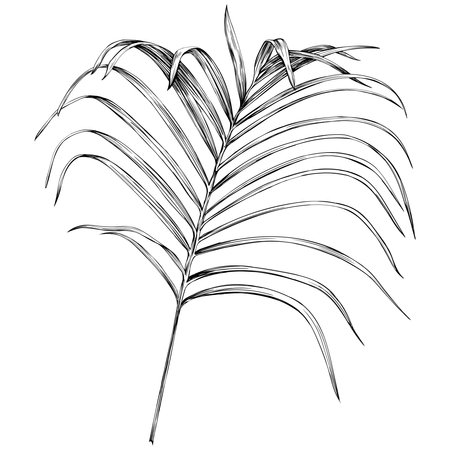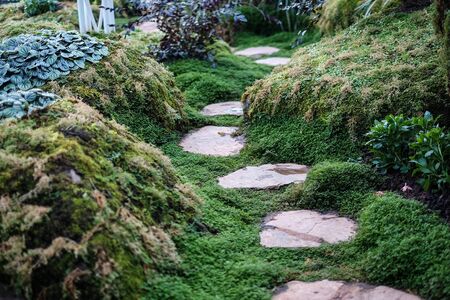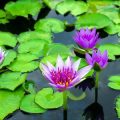1. Why Choose Native Pond Plants?
When it comes to creating a vibrant pond brimming with life, choosing native British pond plants is a decision well worth making. These homegrown beauties are perfectly adapted to our local climate and conditions, which means they thrive with minimal fuss—no need for elaborate care routines or special treatments often required by exotic alternatives. More importantly, native pond plants play a vital role in supporting our unique wildlife. From dragonflies to frogs, newts, and a host of insects and birds, these plants provide the food, shelter, and breeding grounds that our native species rely on. Unlike their non-native counterparts, which can sometimes become invasive or fail to support local ecosystems, British pond plants work in harmony with nature. In short, by opting for what’s naturally at home here, you’ll enjoy an easier gardening experience while doing your bit to preserve Britain’s precious biodiversity right in your own back garden.
Top Native British Pond Plants for Wildlife
When it comes to encouraging wildlife into your garden, nothing quite beats planting a selection of native pond plants. These time-honoured favourites not only look stunning but also create a thriving habitat for birds, insects, and amphibians. Let’s take a closer look at some of the most popular choices that have graced British ponds for generations.
Water Forget-Me-Not (Myosotis scorpioides)
This charming little plant boasts delicate blue flowers throughout the summer months. Water forget-me-not is beloved by bees and butterflies, who visit for its nectar, while its dense foliage provides excellent cover for newts and froglets. It thrives in shallow water at the pond’s edge, making it an easy addition to most garden ponds.
Marsh Marigold (Caltha palustris)
A true herald of spring, marsh marigold brings a burst of golden colour to the water’s edge from March onwards. Its cup-shaped blooms attract pollinators such as hoverflies and bees, while the leaves offer shelter for tadpoles and small aquatic creatures. Hardy and undemanding, marsh marigold is a classic choice for a traditional British pond.
Yellow Flag Iris (Iris pseudacorus)
If you’re after something show-stopping, yellow flag iris is hard to beat. With its tall, sword-like leaves and striking yellow flowers in early summer, it’s a magnet for dragonflies and damselflies looking to lay their eggs. The dense roots also provide safe nooks for frogs and other pond life to hide from predators.
Comparison Table: Key Features of Top Native Pond Plants
| Plant Name | Main Wildlife Attracted | Flowering Season | Best Pond Position |
|---|---|---|---|
| Water Forget-Me-Not | Bees, Butterflies, Newts | Late Spring to Autumn | Pond Edge/Shallow Margins |
| Marsh Marigold | Hoverflies, Bees, Tadpoles | Early Spring to Early Summer | Pond Edge/Shallow Water |
| Yellow Flag Iris | Dragonflies, Frogs, Damselflies | Late Spring to Early Summer | Pond Margins/Deeper Edges |
Selecting these native plants will not only enhance your pond’s appearance but also offer vital food sources and shelter that our British wildlife have depended on for centuries. Whether you’ve got a grand old pond or just a modest water feature tucked away in the corner of your plot, these classics are sure to bring your garden alive with activity.

3. How Native Pond Plants Support Local Wildlife
When you introduce native British pond plants to your garden, you’re not just adding a bit of greenery – you’re setting the stage for a bustling wildlife haven right on your doorstep. These plants play a vital role in attracting and sustaining a wide variety of local creatures, each with their own part to play in the ecosystem.
Attracting Birds
Many native pond plants provide seeds, shelter, and even nesting materials for our feathered friends. Species like reedmace and water mint offer safe hiding spots for birds to forage for insects or rest by the water’s edge. In turn, this encourages regular visits from robins, blackbirds, and even the occasional kingfisher if you’re lucky.
Supporting Amphibians
If you’ve ever delighted in the sound of frogs or spotted newts gliding through the water, you’ll know how magical amphibians can be. Native aquatic plants such as water forget-me-not and marsh marigold give these creatures places to lay eggs and hide from predators. The dense foliage keeps their young safe, while floating leaves offer cool shade on sunny days.
Creating a Haven for Insects
Dragonflies darting across the surface and bees buzzing among flowers are sure signs of a healthy pond environment. Native plants like lesser spearwort and purple loosestrife are magnets for pollinators, providing nectar throughout the warmer months. The submerged stems also harbour aquatic insects, which are food for fish and amphibians alike.
Sustaining Other Wildlife
The benefits don’t stop there – native pond plants help support mammals such as hedgehogs by offering drinking spots and cover from predators. Even bats benefit indirectly, as they feast on the increased insect population drawn in by your thriving pond.
A Balanced Ecosystem
By choosing plants that have evolved alongside Britain’s wildlife, you’ll encourage natural checks and balances in your garden. Pest species are kept at bay by predators; pollinators thrive; and every creature, from tiny beetles to elegant herons, has something to gain. It’s nature’s way of rewarding those who work with it rather than against it – a true testament to how small changes can make a big difference in your own patch of paradise.
Tips for Planting and Maintaining a Wildlife-Friendly Pond
Creating a balanced pond that attracts wildlife is more than simply filling a hole with water and dropping in a few plants. For a typical British garden, it’s about thoughtful planning, plant selection, and consistent upkeep. Here are some tried-and-true tips that will help you nurture a thriving pond teeming with native wildlife.
Choose Plants for Every Pond Zone
To support a healthy ecosystem, include native plants suited to the three main pond zones: marginal, floating, and submerged. Each plays its part in offering shelter, oxygenation, and breeding ground for local creatures. Below is a quick reference guide:
| Pond Zone | Recommended Native Plants | Wildlife Benefits |
|---|---|---|
| Marginal (edges) | Marsh Marigold, Purple Loosestrife, Water Mint | Cover for frogs & newts; nectar for pollinators |
| Floating | Frogbit, Water Violet | Shelter for tadpoles; shade to reduce algae |
| Submerged (oxygenators) | Hornwort, Water Crowfoot | Oxygenate water; habitat for aquatic insects |
Pond Placement and Size Matters
If possible, position your pond where it will get sunlight for at least half the day—too much shade can stifle plant growth. Even in small gardens, a tiny pond or even an old washing-up bowl sunk into the ground can make all the difference to local wildlife.
Avoid Fish—Let Nature Take Its Course
While goldfish might seem appealing, they often disturb sediment and gobble up tadpoles and insect larvae. Native amphibians and dragonflies will be far happier if you leave fish out of the equation.
Maintenance: Keep It Natural but Tidy
Ponds do best when left slightly wild, but a bit of TLC goes a long way:
- Remove excess duckweed or blanket weed by hand as needed.
- In autumn, scoop out fallen leaves to avoid waterlogging and decay.
- Each spring, thin out fast-growing plants to prevent them from taking over.
- Topping up water? Use rainwater if you can—it’s softer than tap water and kinder to pond life.
Nurturing a wildlife-friendly pond is about patience and observation. With time, you’ll see your garden buzzing with damselflies, frogs, and birds—proof that even the humblest patch can become a haven for British nature.
5. Common Challenges and How to Overcome Them
Every seasoned British gardener will tell you that maintaining a thriving wildlife pond is not without its trials. Over the years, I’ve seen my fair share of obstacles pop up – from pesky invasive species to stubborn algae blooms and even the odd dry spell threatening my carefully nurtured native plants. Here, I’ll share some practical wisdom and solutions, all rooted in classic British gardening experience.
Invasive Species: Keeping Unwanted Guests at Bay
One of the most persistent headaches for pond keepers is the arrival of non-native invaders like New Zealand pygmyweed (Crassula helmsii) or floating pennywort. These aggressive plants can quickly choke out your native beauties, upsetting the delicate balance you’ve worked so hard to create. To keep things under control, always source your pond plants from reputable British nurseries specialising in natives. Regularly inspect your pond margins and remove any unfamiliar growths promptly. If you spot an invader early, hand-pulling is often effective – just make sure you get every last bit of root, as many of these species are tenacious.
Algae Blooms: Finding That Clear Water Balance
Nothing spoils a tranquil pond view like a carpet of green algae. In my experience, algae thrives when there’s an excess of nutrients in the water – often from decomposing plant material or fish waste. The old hands’ advice is simple but effective: avoid overfeeding any fish, clear out fallen leaves regularly, and introduce plenty of oxygenating native plants such as hornwort (Ceratophyllum demersum) or water crowfoot (Ranunculus aquatilis). These plants compete with algae for nutrients and help maintain healthy water quality naturally. If you find yourself facing a persistent bloom, a barley straw bag placed in the water is a time-honoured remedy among British gardeners – it gradually releases compounds that inhibit algae growth.
Drought: Helping Your Pond Weather Dry Spells
British weather can be famously unpredictable, and dry summers are becoming increasingly common. During drought conditions, shallow ponds can suffer from low water levels, putting both plants and wildlife under stress. It pays to choose drought-tolerant native species like purple loosestrife (Lythrum salicaria) and water mint (Mentha aquatica), which can handle fluctuating water levels with grace. Mulching around the pond edges with well-rotted leaf mould helps retain moisture, while topping up with collected rainwater rather than tap water (which can contain chemicals harmful to pond life) is another tried-and-tested tip passed down through generations.
Drawing on Community Wisdom
No two ponds are alike, and sometimes challenges arise that stump even experienced gardeners. In true British fashion, don’t hesitate to seek advice from local gardening clubs or neighbours with established ponds – there’s a wealth of knowledge to be tapped into, and most are more than happy to share their own hard-won tips over a cuppa.
A Final Word
Tending a wildlife-friendly pond isn’t always plain sailing, but with patience and these traditional approaches, you’ll soon find that nature has a wonderful way of rewarding your efforts. Keep an eye out for changes, act swiftly when issues appear, and enjoy watching your garden become a haven for native creatures season after season.
6. Year-Round Care for Your Native Pond Plants
Caring for native British pond plants throughout the year is essential if you want your garden pond to remain a haven for wildlife. Each season brings its own challenges and opportunities, so being prepared will help you keep your pond thriving in all weather. Here are some seasoned tips to ensure your watery retreat is healthy and inviting all year round.
Spring: A Fresh Start
As temperatures rise and new life emerges, spring is the perfect time to tidy up any dead foliage from the winter months. Remove fallen leaves and prune back any overgrown or damaged plant material. This not only keeps things looking neat but also prevents decaying matter from polluting the water. Now’s also the ideal time to divide and replant your marginals, like yellow flag iris or purple loosestrife, giving them room to flourish as wildlife returns.
Summer: Keeping Cool and Lush
With longer days and warmer weather, your pond will be bustling with activity. Top up water levels during dry spells using rainwater if possible—tap water can encourage algae growth due to its high nutrient content. Shade-loving plants such as water lilies help keep water cool and provide shelter for tadpoles, newts, and dragonflies. Don’t forget to remove blanket weed or duckweed by hand if it starts to take over, ensuring that open water remains accessible for birds and amphibians.
Autumn: Preparing for the Colder Months
As leaves begin to fall, consider placing a net over your pond to prevent debris from accumulating and decomposing at the bottom. Cut back dying plant stems, but leave some seed heads standing—they offer valuable food and shelter for wildlife through the colder months. It’s also a good time to thin out submerged oxygenators like hornwort, keeping growth in check without disturbing overwintering creatures.
Winter: Protecting Your Pond Community
Ponds slow down in winter, but they still need attention. Avoid breaking ice suddenly; this can harm fish and amphibians beneath the surface. Instead, float a tennis ball or a small plastic bottle on the water before frost sets in—removing it creates a breathing hole for gases to escape. Resist the urge to completely tidy up; leaving some plant cover provides vital refuge for frogs and insects riding out the winter chill.
A Few Words of Wisdom
Throughout every season, remember that patience is key when working with nature. Native pond plants are generally robust and adapted to our climate, but a little regular care goes a long way in supporting both plant health and local wildlife populations. With these simple routines woven into your gardening year, you’ll soon find your pond teeming with life—much like an old English country tale come true.


